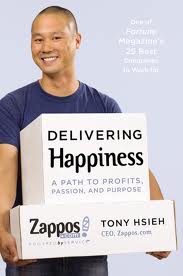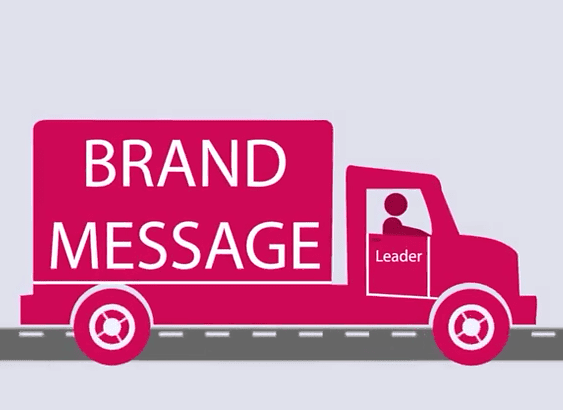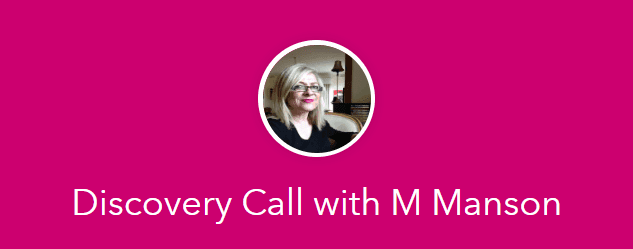The Future of Business.
The future of business is about Leadership, Courage and Innovation.
Picture this: informal social networks developed in crowded teahouses and restaurants; connected local business ecosystems to locate suppliers, and mobilise diverse expertise. Sounds like ‘Silicon Valley’, with its entrepreneurial atmosphere that gave birth to Apple, Intel, Google, and Cisco?
Zoom in. This is the new ‘Silicon Valley’, Gangnam-style. Chongqing, central China: an industry cluster with vibrant new ways of designing and manufacturing motorcycles.
Chongqing is a prototype for disruptive innovation: there are no detailed design drawings, just a product’s key modules outlined in rough design blueprints, specifying only broad performance parameters, such as weight and size. The suppliers are “free to improvise within broad limits”. They take collective responsibility for the detailed design of subsystems, able to rapidly cut costs and improve the quality of their products.
This is the new Innovation paradigm for the new world.
Passion For Making A Difference
In the mid-90s I was involved in the transformation of Target from a traditional retailer with a shotgun approach to marketing to a marketer of a differentiated brand. My role was to bring together separate divisions to collaborate and “reduce the dependence on discounting” – creating customer engagement on a level deeper than price. It still gives me a great satisfaction to see Target being able to leverage its competitive advantage of affordable quality to further distance itself from competitors – for instance, by attracting exclusive relationships with designers like Stella McCartney.
Marketing: to create and leverage an organisation’s Competitive Advantage to attract and keep customers; and Innovation: to continuously adapt and find new ways of engaging customers. A Business Culture is that secret glue that engages employees and customers and carries the organisation through hard times. But there is one problem. Complexity is the silent killer of business.
A great educator, Rick Ackerly, blogs about a first grade teacher named Kathy who would tell the class at the beginning of the year, “Here, we have one rule: Be Kind.” Her classroom was magical. Having only “one rule” didn’t keep children from doing other things like homework or cleaning up. They got it. Of course, they all wanted to work and play in an environment where everyone is kind.
Saying there is “one rule” gave her leadership a name and her classroom culture a simplicity of focus around which everyone could build something beautiful.
Simplicity Rules: Non-Negotiable Principles
I call this One-Rule a Non-Negotiable Principle. How does it work?
 Some organisations are able to distil their Mission to a single Non-Negotiable Principle that all employees can understand, relate to, and apply when making daily decisions. It can easily be tested with a single question: “Will this action support our Non-Negotiable Principle?”
Some organisations are able to distil their Mission to a single Non-Negotiable Principle that all employees can understand, relate to, and apply when making daily decisions. It can easily be tested with a single question: “Will this action support our Non-Negotiable Principle?”
Consider this example of a simple focus on the Competitive Advantage.
Southwest Airlines defines itself as “THE low-fare airline.” An example of how this guides employee decisions is a case of a marketing executive who approached the CEO with some customer survey data, suggesting that Southwest should add a chicken Caesar salad to some of their longer flights. The CEO asked, “Will adding a chicken Caesar salad help us be “THE low-fare airline” in those markets; because, if it won’t, we aren’t serving any damn chicken salad.”
Does it help people make decisions? You bet!
Designed to achieve Bigger Goals
The problem is that most businesses are so focused on the short term objective of making profit that they forget the obvious: money is not a sustainable motivator for People. Just as discounting is not a recipe for a profitable business.
 Gordon Bethune, taking over troubled Continental Airlines, made his team focus on ‘on-time arrivals’. This simple rule allows everyone to test their every action, by asking: ‘Will this decision help us deliver our promise as an ‘on-time arrivals’ airline?
Gordon Bethune, taking over troubled Continental Airlines, made his team focus on ‘on-time arrivals’. This simple rule allows everyone to test their every action, by asking: ‘Will this decision help us deliver our promise as an ‘on-time arrivals’ airline?
Paul O’Neill, taking charge of Alcoa aluminum giant, made his top priority: ‘No worker accidents’. For a commodity business, it was ultimately about cost leadership and he saw that to prevent accidents, all employees would have to understand their operations so well that cost efficiencies would follow.
Giving your employees a CLEAR FOCUS on what is to be achieved and how to know it is being achieved is the ticket to meeting strategic goals faster, cheaper and more often.
When people become comfortable with applying your Non-Negotiable Principles, they become more productive, more confident in the accuracy of their decisions that they find more time and more capacity to think “INNOVATION”.
The flow-on benefits are higher morale, lower staff turnover, and an environment and culture that attracts the best talent and creates a connection with customers that drives profitable sales.
Who moved my Cheese? Minding the Competitive Advantage.
We live in the age of accelerating change. Today no business is untouchable. Business size and an existing Competitive Advantage offer no guarantees. Companies need to continually delight their customers.
So, what happened here?
CASE 1: NOKIA
Nokia is dead. It may still hold 25% of the global handset market. But the once hero of a courageous business transformation and the greatest product innovator has lost its competitive nerve. Nokia has now adopted the Microsoft Windows platform. Where is innovation in that? The European market has already declared that “Nokia Windows’ phones are overpriced for what is not an innovative product”.
CASE 2: SONY
Sony’s a real mess. The former king of consumer electronics has allowed its product development to lag behind other companies. The company is failing both at engaging their customers’ imagination with innovative products and at marketing.
CASE 3: BLACKBERRY
The once-invincible Blackberry owned the smartphone market. It has now become the 3rd horse in a 2-horse smartphone race between Apple’s iPhone and Google’s Android platform. Again – too slow with innovation and failing at marketing.
CASE 4: HP
HP has truly lost its way. Where was the eye on the Competitive Advantage when one CEO tried to remake the world’s largest technology company into a second-rate software firm, putting HPs $41 billion personal systems business on the chopping block?
One More Lesson: What you can’t see, can kill you!
Companies today can rise and fall overnight. And, the spiral is tightening. The real danger WILL come from new competitors who emerge with new business models and cannot be ‘watched’ like traditional competitors.
There is no shortage of examples: MySpace – displaced by Facebook; Sony Walkman – displaced by iTunes; countless book retailers – displaced by Amazon. For this very reason I put low value on benchmarking. You cannot benchmark against what’s not measurable.
The only way companies can keep up with the breakneck speed required of innovation and marketing is to URGENTLY build self-correcting cultures – where everyone participates.
Culture Pays
There is nothing ‘fuzzy’ about Culture. Culture is the real muscle of a differentiating, high-performance organisation. Visionary Leaders treat Culture as a Business Process. And, as a Process, Culture, including Innovation Culture, can be designed, implemented and influenced.
Creating culture is a natural social tendency for humans. Culture connects and bonds people in good and bad ways, via self-correcting behaviours that become the norm. Every culture has its own Language, Symbols and Rituals. And, every organisation has its own informal culture.
The difference between successful, profitable companies, and the rest, lies in what behaviours are broadly adopted and whether these behaviours are purposefully shaped to encourage specific outcomes.
Few organisations have the Vision to make their business culture as ubiquitous as Apple does: from its legendary Leader, evangelising the essence of the brand, to product design, product launches, advertising, store design, service design, staff training.
Everything, to the last detail, supports the holy union of Product and Customer Experience Design. Designing an ‘insanely’ amazing customer experience is Apple’s Non-Negotiable Principle that makes every employee accountable for that outcome.
 An even better example is Zappos – an online retailer, launched in 1999, who not only was making money from day one, but within 10 years – was bought by Amazon for over $1billion.
An even better example is Zappos – an online retailer, launched in 1999, who not only was making money from day one, but within 10 years – was bought by Amazon for over $1billion.
CEO, Tony Hsieh believes that:
“If we get the culture right, then everything else, including the customer service, will fall into place.”
Zappos made “best customer service possible” its core focus and Non-Negotiable Principle – and Culture the #1 priority. The results speak for themselves.
Over 1500 articles and books have been written about Steve Jobs since he died. Like the alchemist’s gold apparently we all want to find the secret of his ‘insane’ success.
But while it is great to admire heroes – you can never BE them. Every organisation needs to take the compass into its own hands and chart its own course! Here is the Compass.
Business Culture as a Process
“If you put good people in bad systems you get bad results.” Stephen Covey.
Businesses run on People and Processes. Culture is not a one-off acquisition or a coat of paint. It is a systematic business Process. There are just six steps to implementing a marketing and innovation business culture.
6 Steps To Implementing A Desired Business Culture
- Insight – the soul-searching: are we there yet? Why not?
- Roadmap – provided as Vision and Mission by the Leaders
- Leaders – visible in the centre of the Conversation and learning
- Navigators – the elite Team that maintains and curates the culture through their passion
- Platform – formal and informal Program and Rituals
- Toolbox – designed to sharpen the Competitive Advantage through Learning and New Insights
But, here is a thing: navigating these 6 STEPS to establish a Culture of continuous improvement and innovation DOESN’T HAVE to be complex. Just the opposite!
Two Strategic Moves
There are only two Strategic Moves Leaders need to make to build valuable, iconic Business Cultures that engage Employees and Customers: Provide Direction and Lead by Example
Providing Direction
There is often a disconnect between what the business wants and what employees are thinking and doing. The desired Future starts with the Vision and Mission.
Vision:
“We are what and where we are because we have first imagined it.” Donald Curtis
The main task of a Leader is to provide a Vision that paints a bold but attainable future for everyone. Only then it can inspire and motivate People to pull together.
Mission:
Mission is not a slogan. When correctly executed, Mission provides the ROADMAP for all employees. It reminds people who they are and what they are best at, focusing their actions on what gives them a Competitive Advantage and how to defend it.
Consider McDonalds’ Mission:
“To provide the fast food customer food prepared in the same high-quality manner world-wide that is tasty, reasonably-priced & delivered consistently in a low-key décor and friendly atmosphere.”
It addresses 3 elements:
- Key Market: the fast food customer world-wide
- Contribution: tasty and reasonably-priced food prepared in a high-quality manner
- Differentiation: delivered consistently (world-wide).
Does it provide a Blueprint for all daily operations across all functions? YES, absolutely!
Leading by Example
The patriarchal era of command and control is over. We live in the age of influence. While having a Vision, Mission and Non-Negotiable Principles is essential, the ongoing success depends on continued training and coaching of the entire organisation. Culture is built on a common language, combined with customs and guided by ideals.
As demonstrated by Apple and Zappos, Leaders need to personally take charge of the message and evangelise it until it becomes a common language and behaviour.
Why? Because the Leadership is not about leading people, but about having people follow you! And, most people need direction and want to have someone to follow!
Takeaway
Start with re-discovering your company’s Mission statement. Does it answer these 3 questions?
- Who is our customer?
- What is our contribution: what is the core service we provide?
- What is our differentiation: What is the ONE thing we need to focus on to ensure we are on the right track and IMPROVING?
Then ask: Does it help me and my Team make operational decisions?
If it doesn’t, RE-WRITE IT! If your title is not CEO create a Mission for your Department. If necessary – pass the buck up… and up… until the buck stops.
Remember. Change is unavoidable. We must embrace and surf the change. Change before you have to!
InnoFuture helps businesses make faster progress towards building an awesome business culture that engages employees and customers. Ask us how we can help you create and leverage your Non-Negotiable Principle to improve focus, productivity and innovation of your employees. Fast!
Contact us: 0407 66 11 30 or complete the form below to discuss your requirements.










